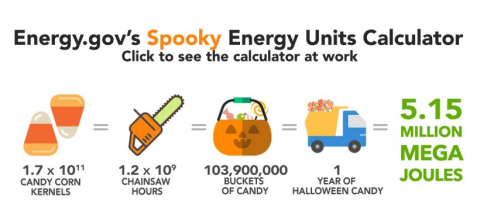Meet Linda Bagby, an engineering physicist at Fermilab.

Scientists at Argonne National Lab used their Advanced Photon Source to analyze the inside of dinosaur bones to determine once and for all just what T-Rex's tiny arms were used for.
Department of Energy Announces 10 New Projects to Improve Connected and Automated Vehicle Efficiency
ARPA-E Awards $32 Million to Use Connected Technologies for Vehicle Energy Savings
Bios for 2016-2017 ESLG Cohort Participants
The Department of Energy recently launched the inaugural Energy Sciences Leadership Group (ESLG) to develop the next generation of leaders who will tackle our current and emerging scientific and energy challenges.

Join Energy.gov to celebrate Energyween, a spooky, week-long celebration of energy, how we use it, and what each of us can do to make our energy us...

In honor of our favorite (made-up) holiday, we wanted to let you know how your energy usage stacks up to the energy found in candy and other ghoulish things.
New Report Chronicles Lessons Learned from Aliso Canyon Leak and Calls for a Phase-out of Single-Barrier Wells
Report focuses on integrity of wells at underground gas storage facilities, public health and environmental effects from a natural gas leak, and energy reliability concerns in the case of future natural gas leaks.
DOE Announces $80 Million Investment to Build Supercritical Carbon Dioxide Pilot Plant Test Facility
The U.S. Department of Energy (DOE) is awarding up to $80 million for a six-year project to design, build, and operate a 10-MWe (megawatts electrical) supercritical carbon dioxide (sCO2) pilot plant test facility in San Antonio, TX.

